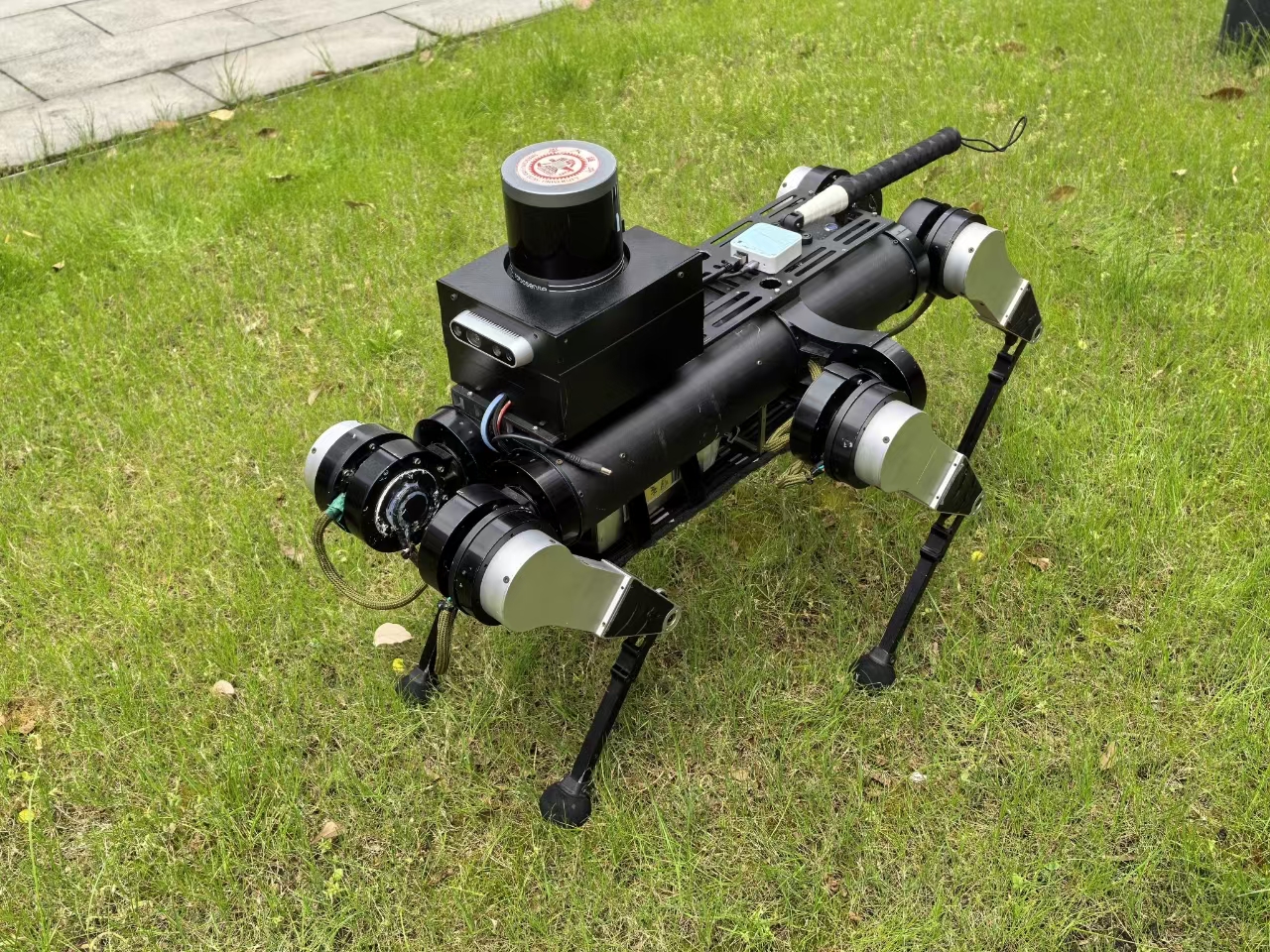
News

News
According to data from the China Blind Association, there are approximately 17.31 million blind people in China. They often face challenges in perceiving objects, directions, and locations during their travels. However, visually impaired individuals have a strong desire to connect with the outside world, participate in concerts, go shopping, visit parks, and engage in various sports activities to experience the richness of life. Despite this, the number of active guide dogs in the country is only a little over 400, with a penetration rate of just 1 in 40,000. Moreover, guide dog training incurs high costs and requires an extended training period, making it insufficient to meet the needs of millions of visually impaired people in China.
At the recent “Technology for Disability Assistance, Sharing a Better Life” exhibition hosted by China Disabled Persons’ Federation, a “six-legged” guide robot developed by Professor Feng Gao‘s team from the School of Mechanical Engineering at Shanghai Jiao Tong University attracted significant attention. This robot possesses visual environment perception capabilities, allowing it to autonomously navigate to its destination, dynamically avoid obstacles, and recognize traffic lights. Notably, through mass production and AI-assisted development, the robot effectively reduces costs and addresses the shortage of guide dogs. Furthermore, by establishing a comprehensive internet service system, the guide robot can provide home assistance, handle emergencies, and lead visually impaired individuals to more places.

Breaking Through Human-Machine Interaction Challenges: Coordinated Control
The primary task of the guide robot is to establish effective communication with visually impaired users while maintaining coordinated movements. For the first time, the team integrated three interaction modes: auditory, tactile, and force feedback. The robot comprehends semantic information based on deep learning end-to-end speech recognition models, enabling rapid and accurate responses to voice commands such as “start,” “stop,” and “set a destination.” Simultaneously, the robot provides real-time feedback on walking and environmental conditions, achieving bidirectional intelligent interaction. By applying force and torque through the guide cane, the robot guides users forward and assists with turning, while users can dynamically adjust walking speed by pushing or pulling the cane. With a maximum speed of 3 m/s, the unique hexapod configuration ensures stable, low-noise walking.
Advancing Visual and Force Based Environment-Task Adaptive Control: Solving Localization, Autonomous Obstacle Avoidance, and Navigation Challenges
Walking in complex terrains requires higher autonomous planning capabilities for the guide robot. Such planning includes ground information acquisition and modeling, localization, path selection, body pose planning, and continuous motion planning. The team established a radar-inertial odometry system using tightly coupled multi-sensor data. By coupling historical frame data using the sliding window method, point cloud motion distortion was significantly reduced, resulting in precise three-dimensional environment mapping and accurate robot self-localization. Based on a global environment map and real-time perception of local dynamic maps, the robot achieves path planning and autonomous obstacle avoidance using model prediction and real-time rolling optimization. Additionally, depth cameras identify traffic signals through deep learning and digital image processing techniques, ensuring safe travel.
Industry-Academia-Research Collaboration: Bringing Guide Robots to Every Household
Shanghai Jiao Tong University’s Professor Feng Gao and his research team collaborate closely with Suochen Robot Co., Ltd. to promote commercialization of guide robots. While the university focuses on fundamental theoretical research and key technology breakthroughs, Suochen Robot handles industrial promotion. This integrated approach of “design, manufacturing, and promotion” accelerates the market adoption of the six-legged guide robot. As a publicly listed company, Suochen Robot possesses ample resources and social influence, providing robust support for the widespread adoption of guide robots.


Shanghai Jiao Tong University
Address: 800 Dongchuan Road, Shanghai
200240